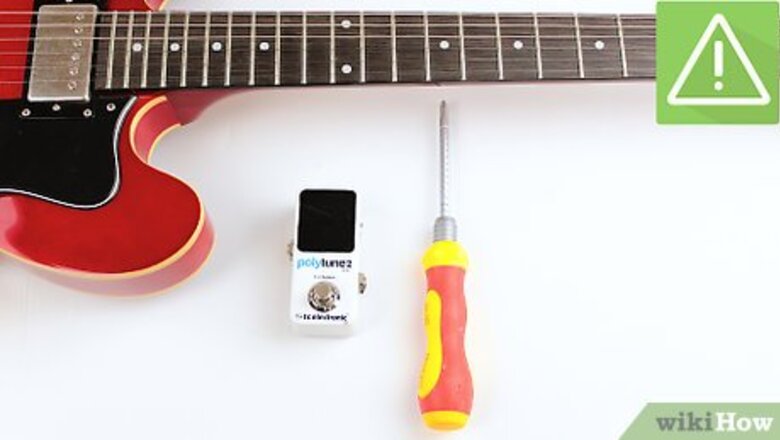
views
This process is identical for both bass and guitar.
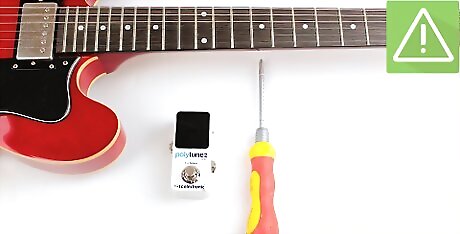
Read through the Tips and Warnings at the bottom of this page. There are several facts that you need to know before you perform this process.
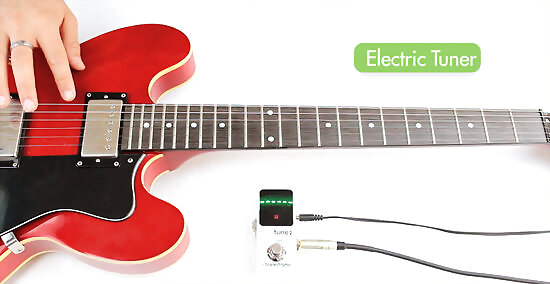
Tune your instrument to the tuning you're planning to play in. Tune all of the strings directly to the tuner. No 5th fret or harmonic tuning here. For electric or acoustic-electric instruments: Use a programmable electric tuner with stroboscope display that you can plug directly into. A mechanical stroboscope can be the most accurate display in 2010. Use the chromatic equation below to get the pitch frequencies fn for this programmable tuner. For acoustic instruments: Use an extremely quiet (and dead) room with a mic tuner. Remember, set up your instrument for the tuning you're going to use. If your band plays in drop D, Ab standard, G modal, or any other tuning you should tune your instrument to the tuning you are going to use. Standard E drop to D is better than standard tuning because of lower string tensions. Bassists: Throughout this process you should be using a pick, even if you do not normally play with one. The way we pluck the string with our fingers works very well when we're playing, but it just is not accurate (or consistent) enough for this process. For all instruments: Tune the entire instrument several times. As the tension on each string changes it may alter the way your neck is sitting and may detune your other strings. Stick with this step until every string is open tuned as close as possible to perfect. When you're tuned, move on to the next step.
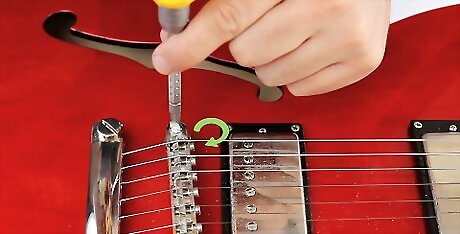
Adjust your action. If you have any desire to raise or lower your string action (the distance between your strings and the fretboard) you should do it now. This means if the string is buzzing raise it so that it does not! When the string is vibrating or buzzing on the next higher pitch fret, the note pitch can quickly and temporarily switch making intonation tuning very difficult. The two pitches may briefly and temporarily blend making sometimes the note pitch a little sharp. The buzzing sometimes produce some harmonic pitches that can reduce the purity of the pitches of the higher pitch frets; the tenth fret note pitches can sound a little higher. The smaller the magnitude and duration of the buzzing on adjacent frets the smaller the offsets d has to be. If you alter your action after you complete the intonation setting process, you may undo all of the work you are about to do. If you do alter your action on any string, repeat step 2. The better quality guitars can have their strings closer to the frets with less buzzing. The closer the string(s) to the frets, the less the string stretching and tension increase when pressed, the smaller the offsets d have to be, the significantly (exponentially) better the intonation tuning due to less string stretching, but string buzzing may perhaps sometimes reduce intonation tuning. Place the strings as close as possible to the frets; if some buzzing on next higher fret can be heard increase the distance slightly. There may be some string buzzing permitted at frets higher than twelfth fret. The more expensive guitars can have their strings closer to the fretboard and so have better intonation tuning. The intonation tuning error due to string stretching is (T+(T (2 yi/s)))-T, where T is the open string tension of the ith string, and yi is the distance between the side of the ith string and the twelfth fret peak. From these equations can tell that intonation tuning improves as string tension T reduces and distance yi between string and twelfth fret reduces with offsets d minimized. Need to keep yi small as possible for first string to achieve intonation tuning. If the distances yi between strings and frets are too large, intonation tuning will be impossible.
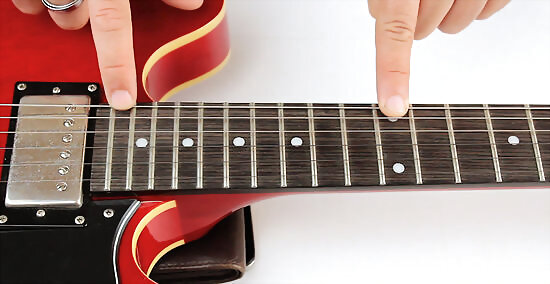
Figure out how far off you are. Fret the string at the 12h fret and pick it. The pick should be moderate, not too hard, not too soft. When fretting, pay special attention to fret only as hard as is necessary to prevent the string from buzzing. Even with a standard un-scalloped fretboard it is possible (especially on guitar) to bend the string sharp several cents by fretting too hard. In normal playing it isn't generally an issue, but for this process you need maximum accuracy. When you play that string at the 12th fret, observe your tuner. If you are sharp (too high) or flat (too low) your intonations are off and an adjustment will need to be made.
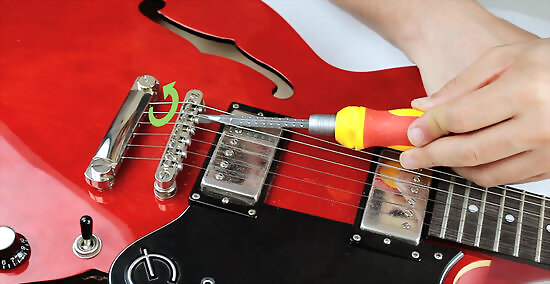
Fix it. Adjust the saddles. Depending on the type of saddles you have determines if you turn the adjustment screws for the each saddle clockwise or counterclockwise. If the note on the 12th fret is sharp, that would mean that the saddle for that string needs to be moved back away from the headstock. If the note on the 12th fret is flat, that would mean that the saddle for that string needs to be moved forward toward the headstock. Compare the twelfth fret note to the corresponding twelfth fret harmonic pitch with electronic tuner for meter. This is decent intonation tuning for notes between nut and twelfth fret range.

Check it. After you make a saddle adjustment, you will need to repeat step 2. Make sure the entire instrument is still perfectly in tune. Once you have completed step 2 again, re-fret the 12th fret on the string you just made the adjustment on and check it on the tuner. You should see that it is not in the same place anymore. If the 12th fret note isn't perfectly in tune while the open note is perfectly in tune, you need to repeat step 4 until it is. Tune the open string note and check the fifth fret note with a mechanical pitch pipe. If the fifth fret note is still a little sharp (high), move the bridge (bridge saddle) back a third of a millimeter. Play some songs on one string and adjust the string length at the bridge accordingly if the intonation does not work well. If it is perfect you are done with that string. Tune the first fret notes by adjusting string tensions; and compare the second to twelfth fret notes of a string with the chromatic electronic tuner pitches. Compare notes of a string with an organ/chromatic pitch pipe link below, and if most of the higher pitches are too high relative to pitch pipe pitches and first fret note, lengthen string by about 0.2 millimetre at bridge, or if too flat (low) move bridge forward (toward fretboard). Repeat this until the notes from nut to twelfth fret of a string closely matches the references pitches. Better intonation tuning of a string occurs when the twelfth fret, sixteenth, and nineteenth fret notes pitches equal their corresponding harmonic pitches. Fine tune by playing "Mama's Pearl" (J5) guitar lead on one string.
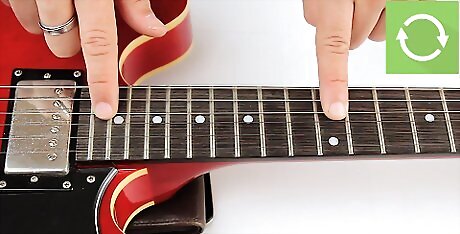
Do the rest. Repeat the process as outlined here for each string on the instrument tuning frequently.

Enjoy. Once you have the instrument completely set up, play a nice fat major barre chord. Listen to all of those overtones you've been missing! Now, kick on your distortion and notice how your guitar is suddenly 300 times more powerful.














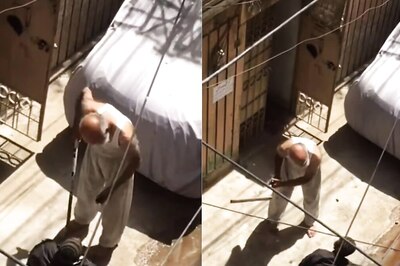



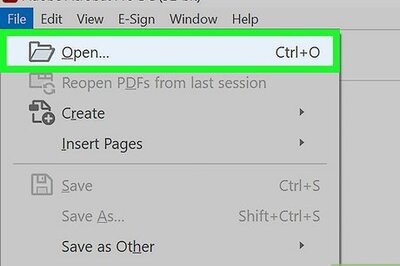
Comments
0 comment